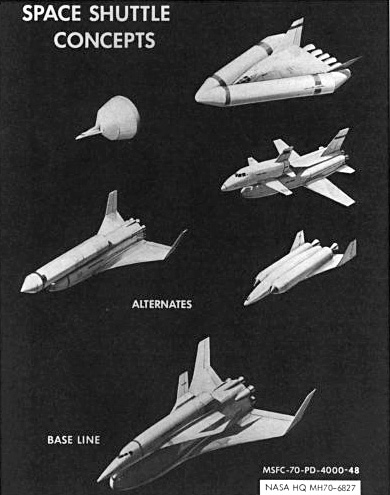ファイル:Space Shuttle concepts.jpg
Space_Shuttle_concepts.jpg (390 × 495 ピクセル、ファイルサイズ: 89キロバイト、MIME タイプ: image/jpeg)
ファイルの履歴
過去の版のファイルを表示するには、その版の日時をクリックしてください。
| 日付と時刻 | サムネイル | 寸法 | 利用者 | コメント | |
|---|---|---|---|---|---|
| 現在の版 | 2012年4月23日 (月) 13:55 |  | 390 × 495 (89キロバイト) | Soerfm | Contrast |
| 2008年3月31日 (月) 18:25 |  | 400 × 503 (28キロバイト) | Wisi~commonswiki | {{Information |Description=Space Shuttle Concepts |Source=NASA-Website |Date= |Author=NASA |Permission=PD |other_versions= }} |
ファイルの使用状況
以下の 2 ページがこのファイルを使用しています:
グローバルなファイル使用状況
以下に挙げる他のウィキがこの画像を使っています:
- ar.wikipedia.org での使用状況
- de.wikipedia.org での使用状況
- en.wikipedia.org での使用状況
- fr.wikipedia.org での使用状況
- he.wikipedia.org での使用状況
- it.wikipedia.org での使用状況
- nds.wikipedia.org での使用状況
- no.wikipedia.org での使用状況
- pt.wikipedia.org での使用状況
- sk.wikipedia.org での使用状況
- uk.wikipedia.org での使用状況
- vec.wikipedia.org での使用状況



